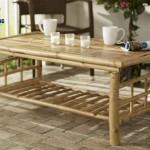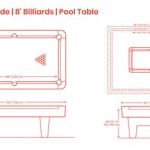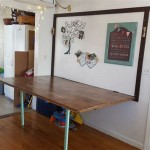How to Make a Glass Top Table
The construction of a glass top table can be a rewarding project, offering a blend of elegance and modern design to any living space. A glass tabletop provides a sleek, easy-to-clean surface that complements various decorating styles. The process involves selecting suitable materials, crafting a sturdy base, and securely attaching the glass top. This article will detail the steps involved in creating a custom glass top table, covering essential considerations for safety, stability, and aesthetic appeal.
Before embarking on this project, meticulous planning is crucial. This involves determining the desired size and shape of the glass top, selecting the appropriate base material, and gathering the necessary tools and safety equipment. Proper preparation ensures a smoother construction process and a higher quality finished product.
Selecting the Glass and Base Materials
The choice of glass is paramount in determining the table’s overall appearance and safety. Tempered glass is highly recommended due to its increased strength and safety characteristics. Tempered glass shatters into small, blunt pieces when broken, reducing the risk of serious injury compared to regular glass, which can break into sharp shards. The thickness of the glass should be appropriate for the table's size and intended use, with thicker glass generally required for larger tabletops or those expected to bear significant weight. Consult with a glass supplier to determine the appropriate thickness based on the dimensions and intended load of the table.
The base material determines the table's style and structural integrity. Wood, metal, and even concrete can be used to create a base that complements the glass top. Wood offers warmth and versatility, allowing for intricate designs and customization. Hardwoods like oak, maple, or walnut are durable choices that can withstand years of use. Metal provides a modern, industrial aesthetic and can be welded or bolted together for a strong and stable base. Steel and aluminum are common choices for metal bases. Concrete bases offer a unique, contemporary look, but require specialized molds and skills to construct.
Consider the overall aesthetic of the room when selecting materials. A minimalist, modern space might benefit from a metal base with clean lines, while a rustic or traditional setting might be better suited for a wooden base with more ornate detailing. The finish of the base should also complement the glass top. For example, a brushed steel base pairs well with clear glass, while a dark wood stain can enhance the look of tinted glass.
Beyond the aesthetic qualities, structural considerations are crucial. The base must be strong enough to support the weight of the glass top and any items placed on the table. The design of the base should distribute weight evenly to prevent stress points that could lead to cracking or instability. For larger tables, multiple support points or a robust central pedestal might be necessary.
Constructing the Table Base
The construction process will vary depending on the chosen base material. For a wooden base, start by creating a detailed plan that outlines the dimensions and joinery methods. Accurate measurements and precise cuts are essential for ensuring a stable and visually appealing structure. Common woodworking techniques such as mortise and tenon joints, dovetail joints, or dowel joints can be used to create strong and durable connections between the various components of the base.
Once the individual pieces are cut, assemble the base using wood glue and fasteners such as screws or bolts. Ensure that all joints are properly aligned and secure before allowing the glue to dry. After the glue has cured, sand the entire base to create a smooth surface. Apply a finish that protects the wood and enhances its natural beauty. Options include stain, varnish, lacquer, or paint. Multiple coats of finish may be necessary to achieve the desired level of protection and sheen.
For a metal base, welding is typically required to join the various pieces. Welding requires specialized equipment and skills, including proper safety precautions. If welding is not feasible, consider using bolted connections. Design the base with flanges or brackets that allow for secure attachment using bolts and nuts. Ensure that all connections are tight and that the base is level and stable.
After the metal base is assembled, clean the surface to remove any rust or debris. Apply a finish that protects the metal from corrosion and enhances its appearance. Options include powder coating, painting, or applying a clear coat. Powder coating provides a durable and long-lasting finish, while paint offers a wider range of color options.
Regardless of the chosen material, ensure that the base is properly leveled before attaching the glass top. An uneven base can place undue stress on the glass, increasing the risk of cracking or shattering. Use shims or adjustable feet to level the base on an uneven floor.
Attaching the Glass Top to the Base
The method of attaching the glass top to the base depends on the design of the base and the desired aesthetic. Several options are available, each with its own advantages and disadvantages.
One common method is to use silicone adhesive pads. These pads provide a non-slip surface that prevents the glass from sliding off the base. They also absorb vibrations and reduce the risk of scratching or damage to the glass or the base. Silicone pads are readily available and easy to install. Simply clean the surface of the base and the glass, peel off the backing from the pads, and press them firmly into place. Ensure that the pads are evenly spaced to distribute the weight of the glass evenly.
Another option is to use metal brackets or clips to secure the glass top to the base. These brackets can be custom-made or purchased from a hardware store. They typically attach to the base with screws or bolts and provide a secure hold on the glass. When using brackets, it is important to use rubber or plastic spacers between the brackets and the glass to prevent scratching or damage. The brackets should be positioned in such a way that they do not obstruct the view of the glass or detract from the overall aesthetic of the table.
For a more seamless look, consider using UV adhesive. UV adhesive is a specialized glue that cures when exposed to ultraviolet light. It creates a strong, transparent bond between the glass and the base. This method requires specialized equipment, including a UV lamp, and careful application to avoid air bubbles or imperfections. UV adhesive is best suited for professionals or experienced DIYers due to the complexity of the process.
Regardless of the chosen method, ensure that the glass top is properly centered on the base and that it is securely attached. Gently test the table's stability before placing any items on it. If the glass top feels loose or wobbly, re-evaluate the attachment method and make any necessary adjustments.
Edge protection is another critical consideration. Exposed glass edges are vulnerable to chipping or cracking. To protect the edges, consider using edge banding or edge polishing. Edge banding involves applying a strip of material, such as wood or metal, to the edges of the glass. Edge polishing involves grinding and smoothing the edges of the glass to create a smooth, rounded profile. Both methods enhance the safety and durability of the table.
By carefully selecting materials, constructing a sturdy base, and securely attaching the glass top, a durable and visually appealing table can be created. Proper planning, attention to detail, and adherence to safety precautions are vital for a successful outcome. The resulting glass top table adds a touch of elegance and functionality to any living space.

How To Make Diy Driftwood Coffee Table With Glass Top At Home

How To Make A Glass Pedestal Table By Yourself

How To Make An Acrylic Table Glass Genius

How To Make Diy Driftwood Coffee Table With Glass Top At Home

How To Make A Sea Glass Mosaic Table The Boondocks Blog

How To Make An Acrylic Table Glass Genius

Diy Coffee Table Display Ideas For Gifts And Home

How To Make A Glass Pedestal Table By Yourself
Transform A Room With Glass Table Tops Everything You Need To Know Abc Mirror

Diy Glass Top Makeup Vanity Liz Marie Blog
Related Posts








